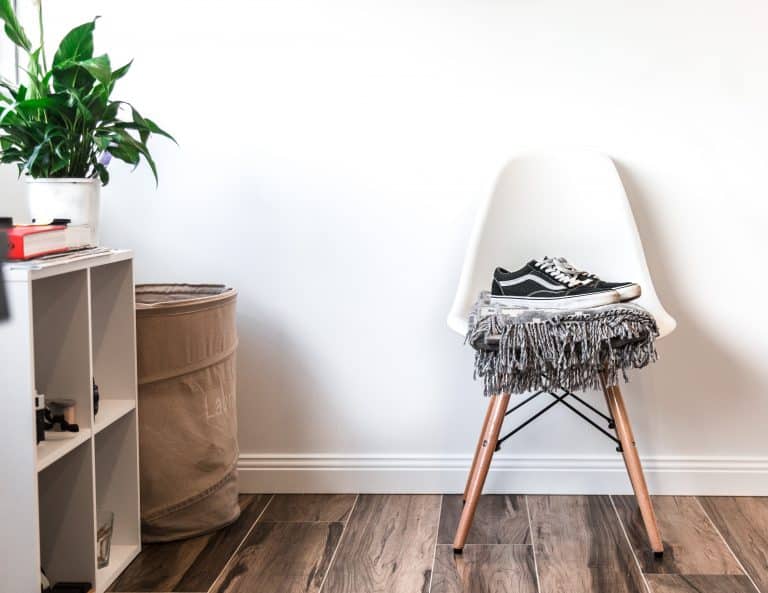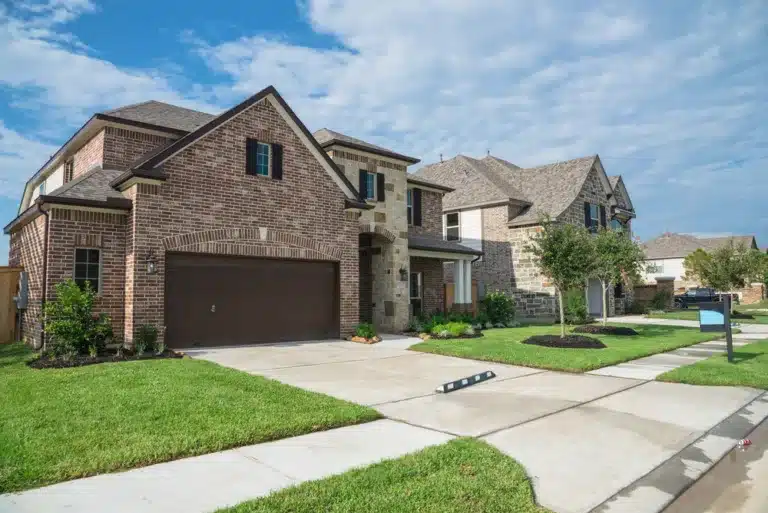Getting a new home loan to replace your existing mortgage is called refinancing. Homeowners refinance their existing mortgages for a variety of reasons.
Why Would I Consider Refinancing?
Refinancing can save you some serious money.
Mortgage interest rates are currently near all-time lows. If you bought your home awhile ago, chances are good that the interest rate you’re currently paying is significantly higher than the interest rate you could get with a new mortgage. A better interest rate could potentially lower your monthly mortgage payment. Plus, you could reduce the overall amount of interest you pay for your home.
You could pay off your mortgage faster.

You may also be able to reduce the overall cost of your mortgage by refinancing to shorten the term of your existing mortgage. Depending on your current situation, switching from a 30-year fixed rate mortgage to a 15-year or 20-year fixed rated mortgage could help you pay your mortgage back faster and save a significant amount of interest.
A higher credit score can qualify you for a better deal.
Even if you purchased your home recently, you may qualify for a better rate now than you did when you first became a homeowner. Financial circumstances change over time. If you originally bought your home with less-than-stellar credit, but your credit score has since improved, refinancing your existing mortgage could allow you to take advantage of your more-credit-worthy status.
Refinancing can allow you to access the equity in your home.

Perhaps you made a sizable down payment. Maybe your home has significantly increased in value since you bought it. Or perhaps you’ve been in your home for many years, steadily chipping away at your mortgage principal. If you have built up some equity in your home, you can potentially access some of it with what’s referred to as a ‘cash-out’ refinance.
With a cash-out refinance, you take out a new home loan for more than you currently owe on your existing mortgage. Then, you pay off your existing mortgage and your closing costs and pocket the difference.
Just like when you bought your home initially, you can only borrow as much as your home is currently worth.
And of course, a cash-out refinance is still a mortgage. And that means you’ll be paying back all of the money you borrowed, with interest. That means you should consider the costs and benefits of a cash-out refinance carefully.
Still, a cash-out refinance can be a prudent financial move. Money from your cash-out refinance can be used to pay down or avoid high-interest credit card debt, to pay for home improvements, or to cover other large expenses.
(Technically, cash-in is also an option for refinancing your mortgage, though it’s less common than cash-out. In that case, you would pay an additional large lump sum as part of your refinancing arrangement, further lowering the principal to be repaid. A cash-in refinance might happen during a divorce, for example. Perhaps one spouse pays the other a lump sum to cover part of the cost of a previously shared home. The remaining spouse can refinance the mortgage to remove the former spouse from the mortgage note.)
You can use refinancing to switch from an ARM to a fixed-rate mortgage.
If you originally financed your home purchase with an adjustable rate mortgage (ARM), you could lock in a set interest rate by refinancing to a fixed-rate mortgage before the interest rate adjusts on your existing mortgage.
If all else fails, extending your mortgage term could lower your monthly payment.

Even without getting a lower interest rate, it’s possible to potentially lower your monthly mortgage payment by refinancing the remaining balance on your existing mortgage over a longer term. Doing so would likely increase the amount of interest you’ll wind up paying over time. But, depending on your current financial situation, the higher interest costs could be worth it for the lower payment amount.
Refinancing could help you stop paying PMI.
If you put less than 20% down when you originally bought your home, you are almost certainly paying PMI. PMI is a fee that ensures your lender in the event that you default on your mortgage. Depending on your mortgage terms, you may be able to stop paying PMI once you’ve built up at least 20% equity in your home. (If your mortgage is an FHA loan, you will continue to pay PMI for the entire duration of your mortgage. The only way to stop paying PMI with an FHA loan is to refinance.)
Important Things to Remember About Refinancing:
If you’re considering refinancing your mortgage, it’s important to understand a few key things.
Refinancing costs money…

Just like your original mortgage, refinancing to a new mortgage comes with closing costs and fees.
…but refinancing doesn’t have to cost money upfront.

You may not need to pay anything out of pocket to refinance your mortgage. Your closing costs can be rolled into the overall financing for your new home loan.
And saving even a little bit can be worth it.

Most people have a mortgage for a long time. And over decades, even a tiny difference in interest rates can mean big savings.
Let’s say you have a 30-year, fixed-rate mortgage for $200,000.
Your monthly payment with a 5% interest rate would be about $1074. If you can lower that interest rate to 4.75%, you’ll save $30.35 a month on your mortgage payment. And an extra $30 a month is nice, but it may not seem like much.
The real savings are apparent over time. For our hypothetical $200,000 loan, reducing the interest rate by just a quarter of a percent would save you $10,925.49 over the full duration of your mortgage. And $10k is nothing to sneeze at.
Refinancing is not nearly as big a hassle as getting your first mortgage.
Did your first mortgage feel like a Sisyphean nightmare of never-ending paperwork and endless demands from your underwriter? (That’s probably because you didn’t get your first mortgage with Morty. Our borrowers rave about how easy our process is. But we digress.)
If you remember applying for a mortgage to purchase your home as a terrible experience, you’ll probably be pleasantly surprised by how much easier it is to refinance an existing mortgage. There’s less paperwork involved. It’s faster. There are fewer hurdles to clear. And this won’t be your first rodeo. You’ll almost definitely have an easier time refinancing than you did when you got your very first mortgage.
How Do I Decide if Refinancing is Worth It?

When deciding whether refinancing is the right choice, it’s important to first understand why you want to refinance your mortgage.
If you are refinancing to lower your interest rate, change the term of your mortgage, or switch from an ARM to a fixed-rate mortgage, you’ll want to consider two key factors:
How long before you break even?
Lowering your interest rate by refinancing your mortgage only makes sense if you will stay in your existing home long enough to cover the closing costs for refinancing. If you’re definitely planning to stay in your home for decades, you will almost always come out ahead by lowering your rate even considering the costs of refinancing. But most people stay in their homes for less than a decade before selling and moving to a new place.
So take a look at your current monthly payment, and compare it to your new, lower monthly payment.
Then, take your total closing costs and divide it by your monthly savings to get a rough idea of how many months you’ll need to stay in your home before you’ll break even on the closing costs for your new mortgage. If the number is longer than you intend to stay put, refinancing may not be in your best interests.
Are the total costs of my new mortgage less than the total costs of sticking with my existing mortgage?

In your first few years as a homeowner, your monthly mortgage payment is applied mostly towards interest. Over time, as you continue to make payments, less of your payment is applied to interest, and a larger portion of your payment is applied to the principal balance on your home.
When you refinance, you are in a sense starting over with a brand new mortgage. And that means you’ll be back to paying mostly interest each month because you’ll once again be at the beginning of your repayment period. Refinancing to take advantage of a lower interest rate is most beneficial early in your mortgage repayment timeline.
When deciding to refinance, you’ll want to compare the interest costs of your potential new mortgage with the remaining interest on your existing mortgage.
To do that, you’ll need to calculate the remaining interest on your existing mortgage.
That stack of paperwork you received at closing for your original mortgage? It should include an amortization schedule, which shows you how much of each mortgage payment is applied to interest and how much is applied to the principal balance. You can also find amortization calculators online. Or, if you want to get fancy, you can create your own in Excel.
Don’t worry about water under the bridge.
When considering refinancing, you don’t need to worry about the interest you’ve already paid. That’s water under the bridge.
Instead, add up the interest you have yet to pay. Then, compare that to the total interest you’ll pay if you refinance. If the total interest and the closing costs on your refinance would be less than you’d pay in interest on your existing loan, you’ll be better off with a new refinancing mortgage.
(You may find that refinancing makes sense only if you stay in your home for more than a certain number of years. If you don’t intend to stay in your home for the full duration of your mortgage term, you can calculate the interest you’ll pay over the next seven or ten or however many years to help you make your decision.)
What if you’re refinancing to cash-out or to extend your mortgage term?

If you’re refinancing to take cash out or to lengthen the amount of time you have to pay off your mortgage, the long-term costs for your refinanced mortgage will likely be higher than the costs for your existing mortgage, even if your monthly payment goes down or remains roughly the same. And that’s okay.
Saving money isn’t always the goal of refinancing. The extra cash now or the lower monthly payment may well be worth the extra expense.
Just be sure you have a clear understanding of how much more you’ll be paying before you sign. If you’re unsure about the costs and potential benefits of refinancing your mortgage, ask. And if you’re ready, you can get started here.






